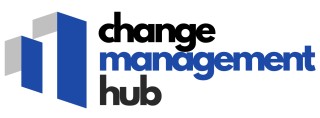
Understanding Total Productive Maintenance
Exploring the Principles of Total Productive Maintenance
Total Productive Maintenance (TPM) is a holistic approach to equipment management that seeks to enhance productivity and efficiency in manufacturing environments. Embracing both lean and sigma methodologies, it aims to minimize downtime and maximize equipment effectiveness. TPM places a strong emphasis on preventive and predictive maintenance strategies, with an overarching goal of achieving zero breakdowns and zero defects in production processes. By integrating TPM into a facility's operations, organizations can significantly improve overall equipment effectiveness (OEE), reduce maintenance costs, and enhance production output and quality. This comprehensive methodology relies on the active participation of all employees, from operators to management personnel, creating an environment of shared responsibility for equipment performance. To fully leverage the benefits of Total Productive Maintenance, it's essential to understand its foundation and practical application in a manufacturing setting. Individuals interested in boosting their skills in this area will benefit from enrolling in a TPM program, where they will learn about planned and autonomous maintenance, as well as receive maintenance certification. Online training and courses, including black belt and belt certification programs, offer flexible learning opportunities for maintenance personnel looking to improve their TPM knowledge and practices. Overall, understanding and implementing Total Productive Maintenance can have a transformative effect on an organization's maintenance strategy, supporting robust lean manufacturing efforts and driving sustainable operational excellence.The Role of Training in TPM
Emphasizing the Role of Continuous Learning
Incorporating Total Productive Maintenance into an organization calls for a shift in mindset and approach, especially among the maintenance personnel. The journey into TPM isn't just about adopting new management strategies but deeply understanding and integrating them. Here is where effective training courses play a vital role. First and foremost, training helps maintenance personnel to grasp the fundamentals of Total Productive Maintenance and learn how to manage equipment effectively. Through a structured training program, participants are introduced to concepts such as autonomous maintenance and preventive maintenance. These courses often cover modules on predictive maintenance and planned maintenance, crucial for improving equipment effectiveness and ensuring seamless production lines. Moreover, a significant focus of TPM training lies in enhancing Lean Manufacturing capabilities. Participants are taught how to incorporate lean principles into their day-to-day operations, effectively reducing waste and increasing productivity. Lean sigma techniques are covered, adding an extra layer of proficiency to the participants’ existing skill sets. The need for certification is emphasized more than ever, as it not only validates the learning but also boosts confidence among the participants. A TPM program that offers belt certification, like the black belt or maintenance certification, can significantly benefit an organization. This not only motivates personnel but also cultivates a culture of continuous improvement and quality management. Additionally, online training options offer flexibility and accessibility, allowing participants to engage in courses that fit their schedules. As part of the training course, online modules provide the convenience of learning at one's own pace without compromising on the quality of instruction. By engaging in comprehensive manager training, employees will learn the nuances of TPM and understand how it fits into the broader landscape of manufacturing. The intricate connection between OEE (Overall Equipment Effectiveness) and TPM becomes clear, showing how productivity strategies can be optimized for better results. For more insights on how comprehensive training can bolster leadership skills in TPM integration, you can check this resource.Key Components of TPM Training
Core Elements of Effective TPM Training
When it comes to enhancing efficiency in manufacturing, Total Productive Maintenance (TPM) training plays a pivotal role. This training is not just about understanding the basics of maintenance; it’s about integrating a comprehensive approach that includes various components essential for successful implementation. Here’s a closer look at the key elements that make TPM training effective:
- Autonomous Maintenance: One of the foundational aspects of TPM is empowering operators to take ownership of their equipment. This involves training them to perform basic maintenance tasks, such as cleaning, lubricating, and inspecting machinery. By doing so, operators can identify potential issues early, reducing downtime and improving overall equipment effectiveness (OEE).
- Planned Maintenance: This component focuses on scheduling regular maintenance activities to prevent unexpected breakdowns. Training in this area ensures that maintenance personnel can effectively plan and execute maintenance tasks, optimizing production schedules and minimizing disruptions.
- Predictive Maintenance: Leveraging technology to predict when equipment might fail is a crucial part of TPM. Training programs often include modules on using data analytics and sensors to monitor equipment health, allowing for timely interventions that prevent costly failures.
- Quality Maintenance: Ensuring that equipment consistently produces high-quality products is another critical aspect. TPM training covers techniques for maintaining equipment precision and reliability, which directly impacts product quality and manufacturing efficiency.
- Lean Manufacturing and Six Sigma Integration: TPM training often incorporates principles from lean manufacturing and Six Sigma to streamline processes and reduce waste. Participants will learn how to apply these methodologies to enhance productivity and quality.
- Certification and Continuous Improvement: Many TPM programs offer certification, such as black belt certification, to validate the skills acquired. This not only boosts the confidence of maintenance personnel but also fosters a culture of continuous improvement within the organization.
By focusing on these components, a TPM training course can significantly enhance the skills of maintenance personnel, leading to improved equipment effectiveness and production quality. For those looking to delve deeper into crafting an effective change management plan, consider exploring this practical guide for further insights.
Challenges in Implementing TPM
Navigating the Hurdles to Implementing Total Productive Maintenance
Successful implementation of Total Productive Maintenance (TPM) programs is essential for enhancing efficiency and productivity within manufacturing settings. However, rolling out a robust TPM strategy is not without its challenges. It's crucial to recognize these hurdles to effectively address them. One major challenge in implementing TPM is the shift in mindset required across all levels of the organization. Transitioning from traditional maintenance practices to a comprehensive TPM approach involves changing entrenched habits and beliefs about maintenance and productivity. Maintenance personnel, production teams, and management must be on the same page regarding the importance of TPM and its goal of optimally maintaining equipment effectiveness. Another common obstacle is the substantial time commitment necessary for proper training and certification courses. Engaging maintenance staff in programs like online training can be demanding, as it necessitates balancing ongoing production responsibilities with learning. This is where lean sigma methodologies can play a vital role, by streamlining processes and minimizing downtime during training sessions. Moreover, integrating TPM into existing systems and practices can be difficult. Organizations may face challenges with the alignment of TPM initiatives with current lean manufacturing strategies or existing management practices. Planned and preventive maintenance strategies need to be coordinated effectively with new TPM processes to ensure a smooth transition. Financial constraints and resource allocation can also pose challenges. The investment required for TPM training and certification, particularly comprehensive programs that cover autonomous and predictive maintenance, often strains budgets. Furthermore, issues might arise in acquiring high-quality training resources, resulting in less-than-optimal learning outcomes. To address these challenges effectively, organizations should foster clear communication channels and provide continuous support to facilitate the adoption of TPM. Regular assessments and adjustments of the TPM strategy can help mitigate resistance and promote efficiency, ultimately leading to improved overall equipment effectiveness (OEE). Overall, understanding and overcoming these hurdles is vital to successful TPM implementation. It ensures that all parties involved in maintaining equipment have the required skill set and mindset to support the organization's move towards better productivity and quality outcomes.Measuring the Impact of TPM Training
Evaluating the Effectiveness of Total Productive Maintenance Training
Once a Total Productive Maintenance program is up and running, organizations need to assess how successful their training efforts have been. This is essential for understanding if the TPM initiatives are yielding the desired improvements in productivity and efficiency. Here are some ways this can be achieved:
- OEE Improvement: Overall Equipment Effectiveness (OEE) serves as a critical metric in evaluating TPM success. By analyzing OEE before and after TPM training, maintenance personnel can determine if there are marked improvements in quality, performance, and availability of equipment.
- Reduction in Downtime: Successful implementation of preventive and predictive maintenance strategies can drastically minimize unscheduled downtimes. Monitoring equipment effectiveness post-training gives insight into these reductions, showcasing the importance of a comprehensive TPM course.
- Enhanced Maintenance Strategies: Lean manufacturing principles like autonomous, planned, and preventive maintenance should reflect in the day-to-day operations. Regular audits and feedback sessions with maintenance personnel trained in black belt certification or similar can reveal how robust these strategies have become.
- Feedback from Personnel: Another crucial aspect is the feedback from the trained personnel. Insights gathered from online training assessments and autonomous maintenance practices can highlight areas of further improvement and success.
- Production Quality: A well-run TPM program should see improvements in production quality. Organizations should measure and record changes in sigma levels to track these improvements.
Ultimately, ongoing analysis ensures the TPM training and certification are translating into tangible, positive impacts on equipment and production processes. A strategic approach should align with larger management strategies, setting the stage for lean sigma advancements and overall operational excellence.
Best Practices for Successful TPM Implementation
Adopting Proven Strategies for Effective TPM Implementation
To enhance efficiency in production and ensure the long-term success of Total Productive Maintenance (TPM), adopting best practices is essential. Organizations must focus on structured methodologies and continuous improvement to embed TPM principles within their operations. Here's how you can successfully implement TPM in your manufacturing or maintenance setup:- Incorporate Comprehensive Training: Integrate a well-rounded training course that covers aspects like equipment effectiveness, autonomous maintenance, and preventive strategies. Regular training sessions build a knowledgeable workforce proficient in TPM techniques.
- Utilize Online Training Resources: With advances in technology, online training options provide flexibility and scalability. Opt for courses that offer maintenance certification and advanced belt certifications, such as lean sigma and black belt, to enhance personnel skills.
- Establish a Dedicated TPM Team: A cross-functional team, including maintenance personnel and lean manufacturing specialists, can drive TPM efforts. This team will manage the planned maintenance strategy, monitor progress, and ensure the implementation aligns with the overall management strategy.
- Focus on Data-Driven Decisions: Utilize production data to optimize the maintenance program. Measure key metrics like Overall Equipment Effectiveness (OEE) and adopt predictive maintenance techniques to anticipate potential equipment failures.
- Foster a Culture of Continuous Improvement: Instill a mindset of continuous learning and adaptability within your organization. Encourage employees to participate in the TPM program and lean sigma initiatives actively.
- Prioritize Communication and Engagement: Keep all stakeholders informed about the TPM processes and encourage feedback. Engagement from all levels, from management to the factory floor, is crucial for identifying areas for improvement and cultivating a sense of ownership.
- Leverage Expert Guidance: Consider partnering with a strategy institute or TPM expert to gain insights into effective implementation. External expertise can provide fresh perspectives and innovative solutions to complex challenges.













